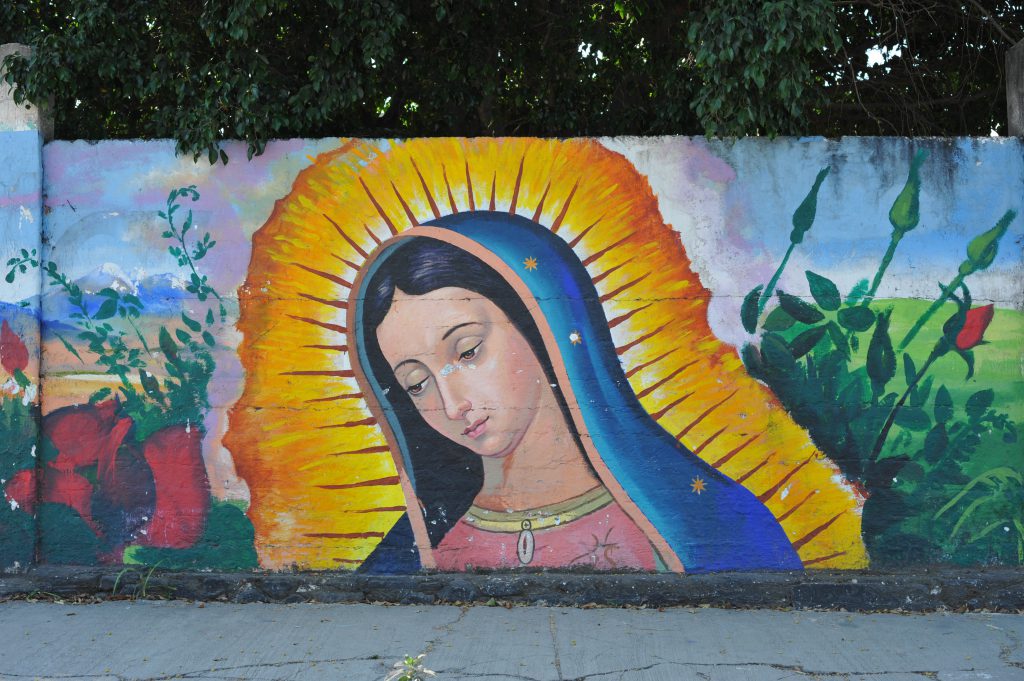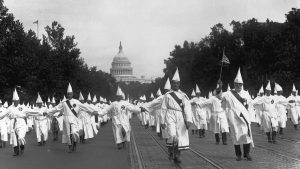Imagine waking up one day and going about your regular routine, when suddenly something happens that will not only change your life but the lives of Catholics and Mexicans forever.
At dawn on December 9, 1531, Juan Diego, who was a young Aztec Indian from the village of Cuautitlán, was on his way to attend weekly mass at the Franciscan church at Tlatelolco. He had recently converted to Catholicism, and the church was a few miles away from his uncle’s house, where he lived at after the death of his parents. While taking a shortcut over the hill of Tepeyac, he heard his name being called, and at the same time he heard music and the singing of birds.1 He followed the sounds and heard someone calling to him from the peak of the hill, “Juanito, Little Diego.” When he reached the top of the hill, he saw a young lady standing there who motioned for him to come closer: “Juanito, the smallest of my sons, where are you going?” He answered: “My Lady and my child, I have to go to your house in Mexico, Tlatelolco.” She declared herself to be “the eternal Virgin, holy Mother of the true God” and “merciful Mother” of men.2 She told Juan Diego to go to the bishop of Mexico, the Spaniard Fray Juan de Zumarraga, and tell him that she wished to have a church built on the hill of Tepeyac.3 This was the start of a life-changing moment for Juan Diego and soon, for Catholics all over the world.

Later that day, Juan Diego made his way to the bishop’s palace, which was about four miles away, and after some difficulty with the guards, he was eventually admitted to the bishop’s study, and he delivered the message from the Virgin Mary and told him everything that he admired, saw, and heard.4 The Bishop answered: “You will come again, my child, and I will think about the message you have brought.”5 Zumarraga was sympathetic but not convinced by the story that Juan Diego told him. As the first Catholic bishop of Mexico, he had heard many wild stories from converted Indians, and needed more time to think about it. In the recent decade, the colony of New Spain had been established after Hernan Cortes conquered the Aztecs in 1521. One of the goals of the Spanish was to convert the native indigenous population to Christianity. However, this was a very slow process. In many areas, the old religious practices were still being maintained a decade later. Some of the beliefs of the natives were incorporated into their own form of Christianity.6 Juan Diego left the bishop’s palace feeling very sad and returned to the hill where he had previously seen the Virgin, and explained to her what happened with the bishop, and suggested that it would be a better idea for her to send someone more important than he was to the bishop. The Virgin reassured him that he was the chosen one, and directed him to visit the bishop again the following day.7
The next day, on December 10, Juan Diego returned to the bishop’s palace and asked him if they could build the church for the Virgin Mary. The bishop asked him many questions in order to test his truthfulness, such as where he had seen her and how she looked, and Juan Diego answered everything precisely to the bishop.8 The bishop listened carefully but said he would need some proof before building a church for her. He directed Juan Diego to bring back an unmistakable sign for the validation of the apparitions that occurred. After Juan Diego left, the bishop then sent two of his staff to follow him and report back what they had seen. Juan Diego went back to the hill at Tepeyac and the staffers that were following him lost sight of him and returned back to the bishop’s palace. Meanwhile, Juan Diego had seen the Virgin Mary again, and told her the answer that the bishop had given him. She told him to come back the following day and she would give him a sign for the bishop.9
When he returned home, Juan Diego found his uncle, Juan Bernardino, seriously ill and at the point of dying. He nursed him all through the night. In the morning, he decided to call on a priest from the church at Tlatelolco to administer the last rites, as his uncle’s health was not improving. Juan Diego was worried that he had failed to meet with the Virgin Mary, and took the longer and lower road to Tlatelolco instead of the shortcut over the hill of Tepeyac. But the Virgin appeared on the lower path and told him that there was no need to worry about his uncle Bernardino, whom she had visited and was now cured. She then told Juan to go back to the top of the hill, where he would find many flowers growing. His mission was to pick a bunch of the flowers, wrap them in his cloak, and take them to the bishop. The Virgin stressed that these flowers must be concealed and not shown to anyone else.10

The top of the hill was not a place where flowers would usually grow, because of thorns, thistles, cactus, and small weeds. And it was the month of December, when everything is killed by the frost. However, he found some beautiful and fragrant roses growing, so he picked a bunch, wrapped them in his cloak, and headed down towards the Virgin to show her what he had discovered. The Virgin took them in her hands and told him that this bunch of flowers was the proof that he needed to show the bishop, and in showing him, the bishop would believe all that Juan Diego had said.11 He picked up the bunch of flowers, wrapped them in his cloak, and headed towards the bishop’s palace one last time, and upon arrival, the guards demanded to know what he was carrying in his cloak. The guards could smell the flowers and when they opened the cloak, the roses were fresh, fragrant, fully open, and precious. They took the cloak away from Juan and attempted to grab some of the flowers, but once they had opened it again and reached to grab some, the roses had become painted flowers on the inside of the cloak. They took Juan to the bishop and when he unfolded his white cloak to the bishop, the fresh roses spilled out onto the floor. When the various roses fell on the floor, the bishop saw that on the inside of the cloak where the flowers once had been, a portrait of the Virgin Mary appeared.12

When the bishop and all that were present saw this image, they fell to their knees in admiration. The bishop took the cloak to his chapel, where he then prayed and thanked God and the Virgin for the miracle. The bishop, astounded by this miracle, asked to be taken to where Juan Diego had seen the Virgin Mary. Upon arrival at the hill of Tepeyac, the bishop ordered that the church that the Virgin Mary had requested to be built would indeed be built, and would be named “The Basilica of Our Lady of Guadalupe,” which is located in present-day Mexico City. The cloak with the picture of Our Lady of Guadalupe can be found at this church that was built in her honor.13
It has been said that the dark-skinned image of Mother Mary as a virginal Native American girl helped the Spanish priests convert millions of Mexican Indians to Catholicism.14 Occasionally, we encounter a symbol that seems to enshrine the major hopes and aspirations of an entire society. Such a master symbol is represented by the Virgin of Guadalupe, Mexico’s patron saint. Her image was not only used during wars and battles as a figure of protection, but is also still used to adorns house fronts, churches and home altars, restaurants, and so much more. Her shrine at Tepeyac is visited each year by hundreds of thousands of pilgrims that all go to honor her.15 To the present day, Our Lady of Guadalupe remains a powerful symbol of Mexican identity and faith, and her image is associated with everything from motherhood to feminism to social justice. Her image has often graced the banners of those struggling for Mexican independence, and she has been understood by many devotees to side with oppressed and poor people. Mexican immigrants to the United States brought with them their devotion to her—privately and affectionately called “La Morenita”—and have helped to perpetuate her identification with others.16 After the apparitions of the Virgin Mary occurred, many Catholics began to honor her and see her as their own mother, especially Mexicans since they often refer to her as “nuestra Madre” or “Our Mother” and adopted her as their own. The feast of Our Lady of Guadalupe is celebrated every December 12, which became a national holiday in Mexico in 1859, and she has been recognized as the patron saint of Mexico.17

- Encyclopedia of Occultism and Parapsychology, 2001, s.v. “Guadalupe Apparitions (of the Virgin Mary)”, by J. Gordon Melton. ↵
- Samuel Marti, The Virgen of Guadalupe and Juan Diego (Ediciones Euroamericanas, 1973), 36-38. ↵
- Encyclopedia of Occultism and Parapsychology, 2001, s.v. “Guadalupe Apparitions (of the Virgin Mary)”, by J. Gordon Melton. ↵
- Encyclopedia of Occultism and Parapsychology, 2001, s.v. “Guadalupe Apparitions (of the Virgin Mary)”, by J. Gordon Melton. ↵
- Samuel Marti, The Virgen of Guadalupe and Juan Diego (Ediciones Euroamericanas, 1973), 39. ↵
- Global Events: Milestone Events Throughout History, 2014, s.v. “The Virgin of Guadalupe Appears to Juan Diego”, by Jennifer Stock. ↵
- Encyclopedia of Occultism and Parapsychology, 2001, s.v. “Guadalupe Apparitions (of the Virgin Mary)”, by J. Gordon Melton. ↵
- Samuel Marti, The Virgen of Guadalupe and Juan Diego (Ediciones Euroamericanas, 1973), 43. ↵
- Encyclopedia of Occultism and Parapsychology, 2001, s.v. “Guadalupe Apparitions (of the Virgin Mary)”, by J. Gordon Melton. ↵
- Encyclopedia of Occultism and Parapsychology, 2001, s.v. “Guadalupe Apparitions (of the Virgin Mary)”, by J. Gordon Melton. ↵
- Samuel Marti, The Virgen of Guadalupe and Juan Diego (Ediciones Euroamericanas, 1973), 48. ↵
- Encyclopedia of Occultism and Parapsychology, 2001, s.v. “Guadalupe Apparitions (of the Virgin Mary)”, by J. Gordon Melton. ↵
- Global Events: Milestone Events Throughout History, 2014, s.v. “The Virgin of Guadalupe Appears to Juan Diego”, by Jennifer Stock. ↵
- The Gale Encyclopedia of the Unusual and Unexplained, 2003, s.v. “Virgin of Guadalupe,” by Brad Steiger and Sherry Hanson Steiger. ↵
- Eric R. Wolf, “The Virgin of Guadalupe: A Mexican National Symbol,” The Journal of American Folklore 71, no. 279 (1958): 1. ↵
- Contemporary American Religion, 1999, s.v. “Virgin of Guadalupe,” by Sandra L. Zimdars-Swartz. ↵
- Contemporary American Religion, 1999, s.v. “Virgin of Guadalupe,” by Sandra L. Zimdars-Swartz. ↵



103 comments
Jose Maria Gallegos Cebreros
First of all congrats on your great article. I am familiar with the virgen de guadalupe story and I really enjoyed reading your article. I really like that you referred to the Basilica the Guadalupe, which its the church that they built and it is massive this days. I really like the way you structured your article and how you emphasized Juan Diego in the story.
Sofia Perez
I have heard the story of Juan Diego’s story multiple times, but it never gets old. I have gone to catholic school all my life so every year on December 12, my schools would reenact the story during mass or we would watch a cartoon of Our Lady of Guadalupe. My favorite part is when Juan Diego is worried about his uncle’s health, he is put to the test, but the Virgin reassures him that his uncle will be alright and continue his mission. After the bishop witnesses a miracle, he is convinced to build a church on the hill, and soon after Diego’s uncle recovers.
Anna Steck
I thought this was an interesting article because it went into some of the cultural importance of the events behind the apparitions of Our Lady of Guadalupe. So much of the Christianizing of Natives was done without respect to their cultures or way of life and pushed European ideals. What I love about Our Lady of Guadalupe is that she appeared representative of the people the Church was often disrespecting. It caused many to convert, but it also helped those non-Europeans to make this European religion their own. So beautiful.
Adelina Wueste
This was such a great article! Your article included so much important information and detail on the story of the Virgen of Gaudalupe. The images in your article really highlight the details of the story, especially the third image. In the article you mentioned how the Virgen has dark skin and dark hair which appealed to the natives. The image you added gave me a visual for what you were describing in your article. Having the image of the Virgen helped me see how the image of the Virgen is different from the images of other religious figures and how that likely effected how the natives perceived her.
Mauricio Rebaza Figueroa
Good night, Nicole. I would like to personally thank you for this article and the way you used this really interesting topic to let more people know about hispanic and Mexican catholic traditions and culture. Nuestra Señora de Guadalupe could be considered one of the main and most representative figures of hispanic catholicism. You had a really good use of images to help put in context the lector and also of sources that help with trusting the content you put into your work. Very good job.
Antonika Vainqueur
Ortiz did a great job. The author’s careful use of images really helped shape the story. It was well written and very insightful. The author was able to convey to the reader the message of restored faith and culture during a time in which the people of Mexico had lost their rooted identity. The article was overall a good read.
Mauricio Rebaza Figueroa
Good night, Nicole. I would like to personally thank you for this article and the way you used this really interesting topic to let more people know about hispanic and Mexican catholic traditions and culture. Nuestra Señora de Guadalupe could be considered one of the main and most representative figures of hispanic catholicism. You had a really good use of images to help put in context the lector and also of sources that help with trusting the content you put into your work. Good job.
Vianne Beltran
Hi Nicole,
As I was growing up I have always heard the story of Juan Diego and the vision he saw of Mary. It always seemed so different and so personal than all other bible stories I’ve heard. Your article made me realize why. I think it’s because Mary appeared to Juan Diego as a person he could relate to with dark skin and dark hair. It’s always so interesting to see how common religious figures appear in other places of the world.
Carlos Hinojosa
I always liked the story about the Virgen of Guadulupe since it’s one of the few stories where the Virgen Mary is the centerpiece. Also in my middle school we always had a play held the day of feast for the Virgen. I don’t know if they still do it but I always thought that was pretty cool. This article did a great job of telling the story of the Virgen of Guadulupe. Very well-made Article, and I hope to read more by you.
Daniel Gimena
The appearance of Virgin Mary to Juan Diego and the prove of this shown by him were seen as a holly signal not only for Bishop Zumarraga, but for the entire Aztec empire too. While the Aztecs viewed La Meliche as a betrayer for intentionally helping the conquerors, Juan Diego was viewed as the human carrier of Virigin Mary’s message. All what happened was felt like a signal for converting to Christianity, which was only possible with the aid of Spanish bishops. The Aztecs didn’t think that Juan Diego had done something wrong or betrayed them, as he only was the person who had received the message of conversation into a new religion.